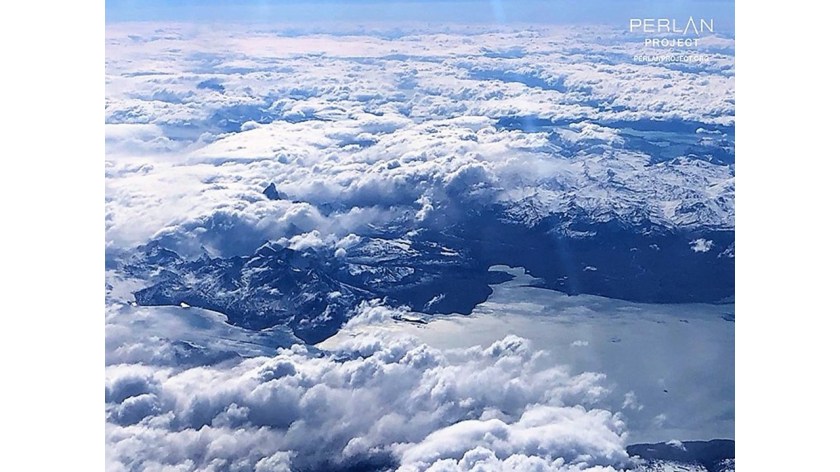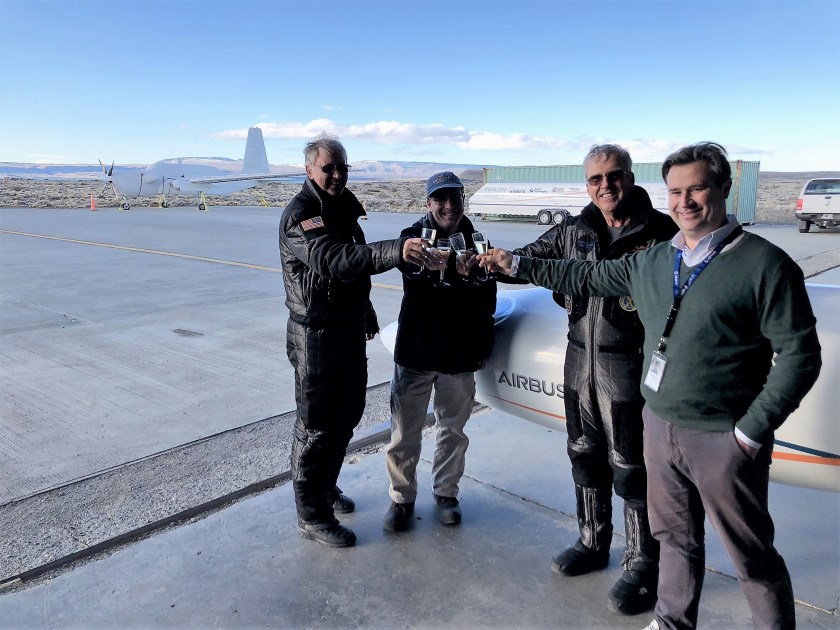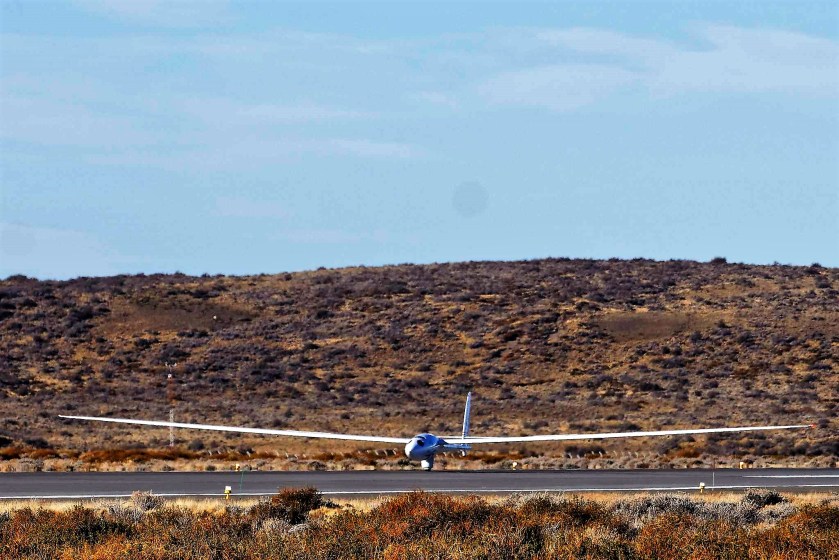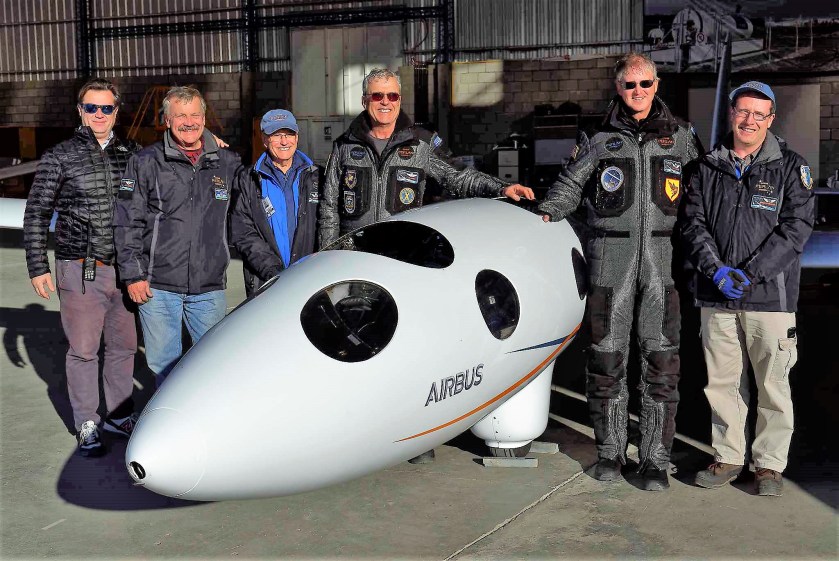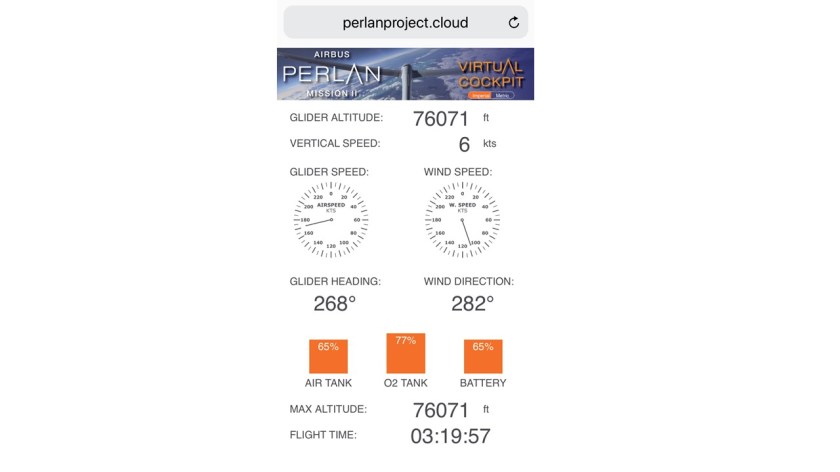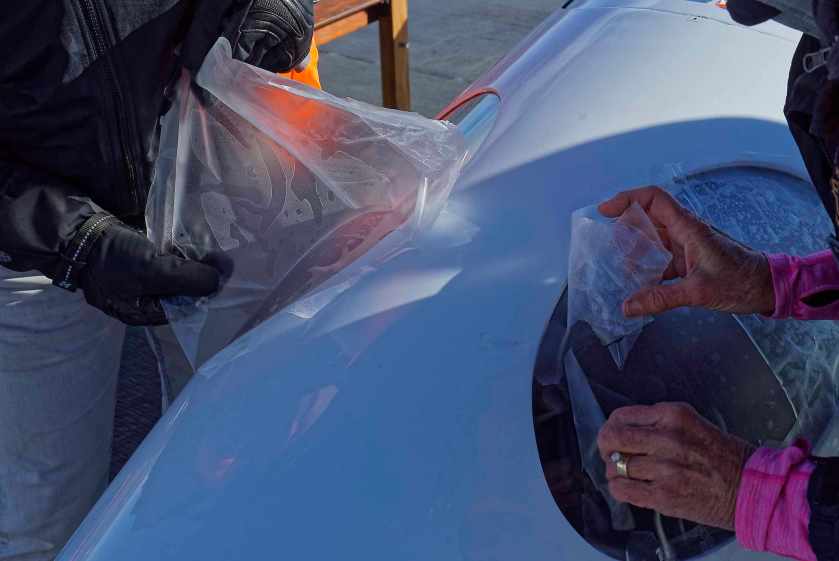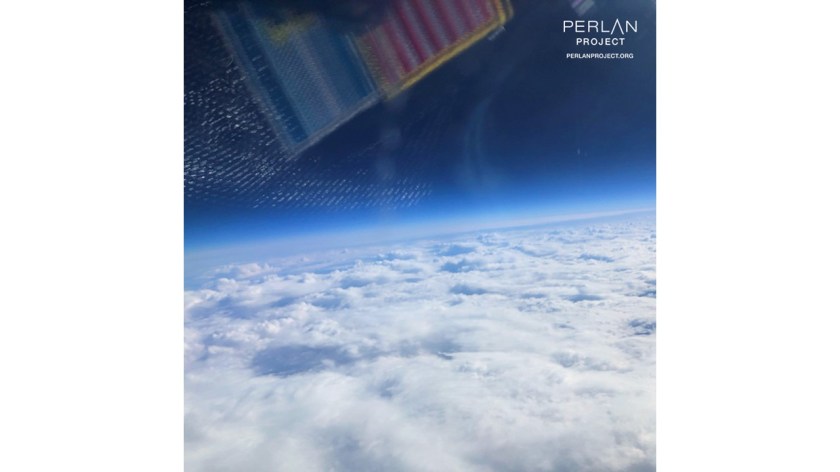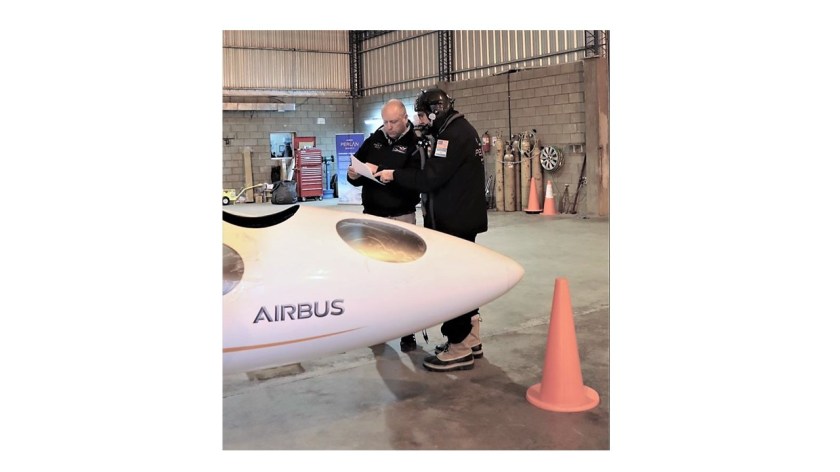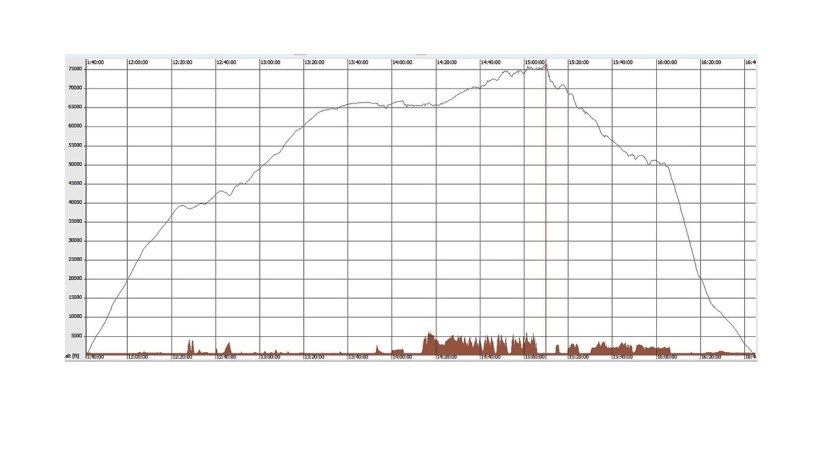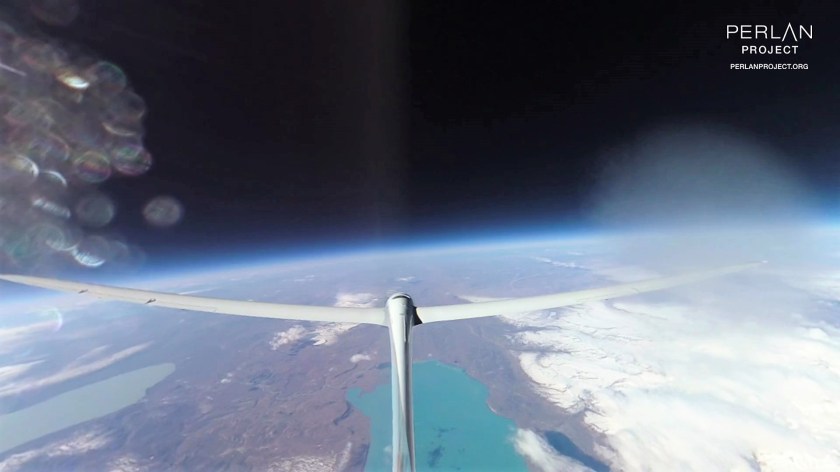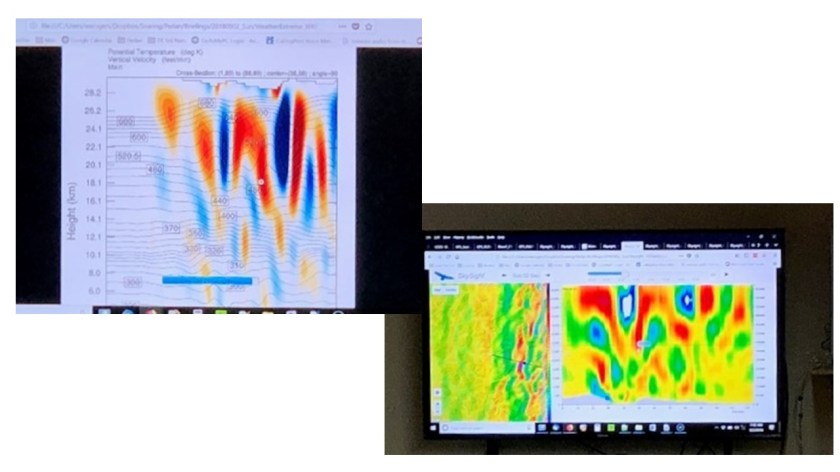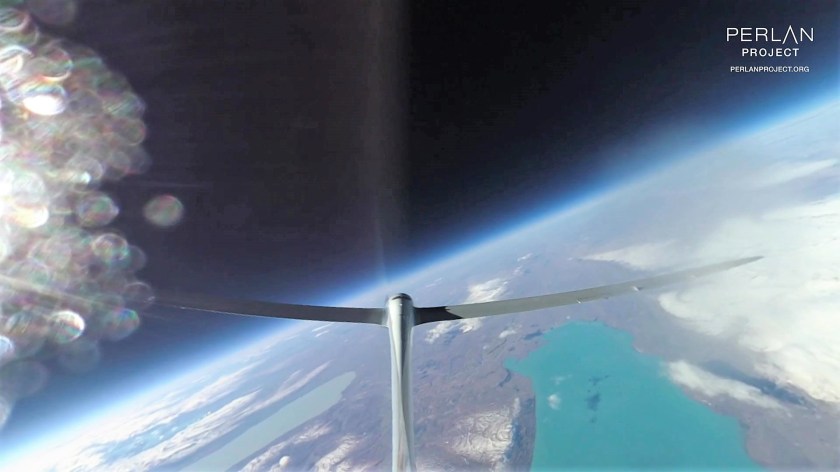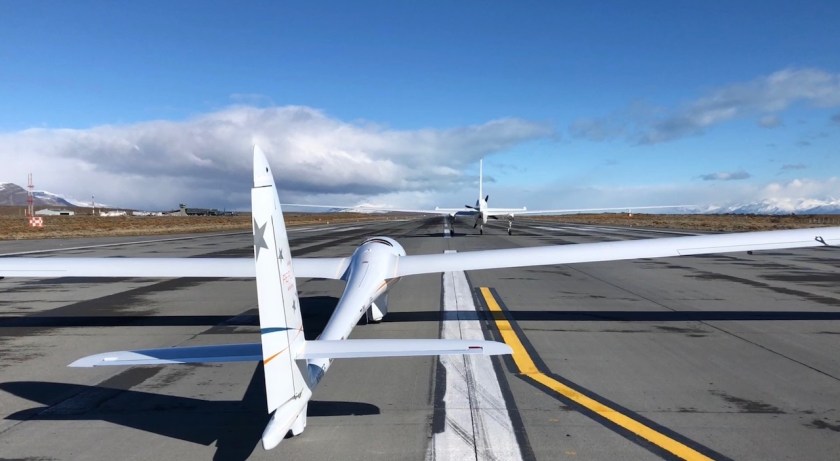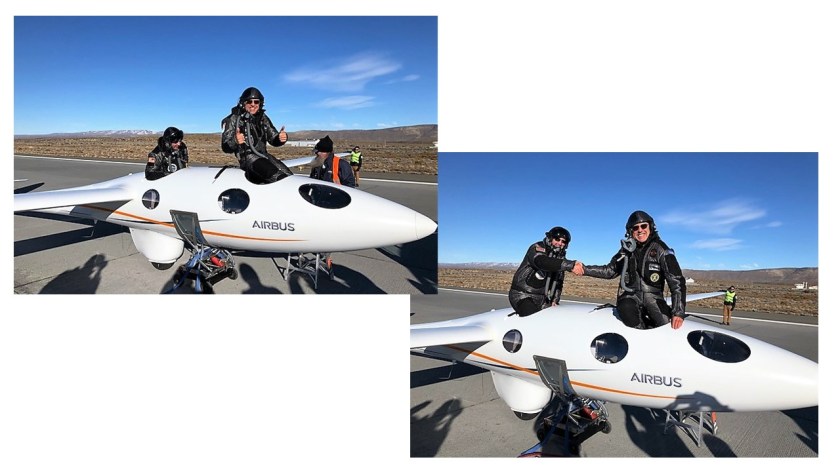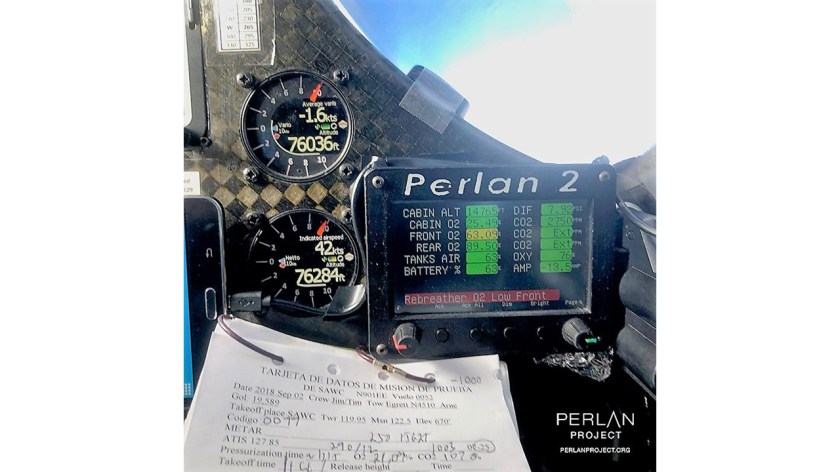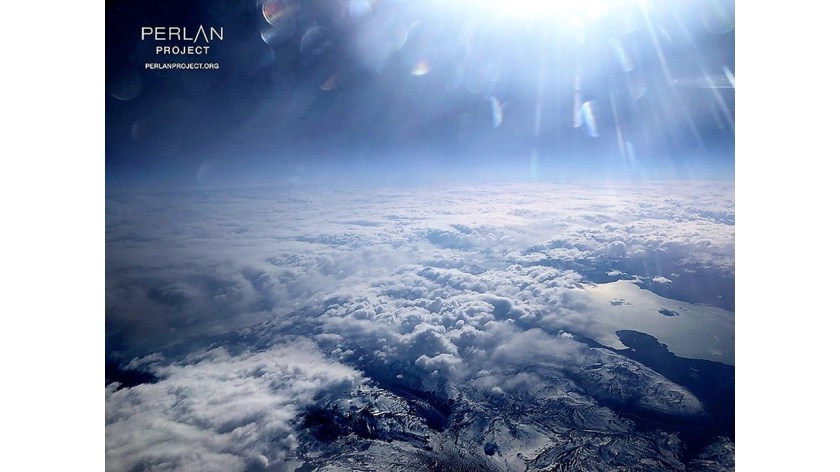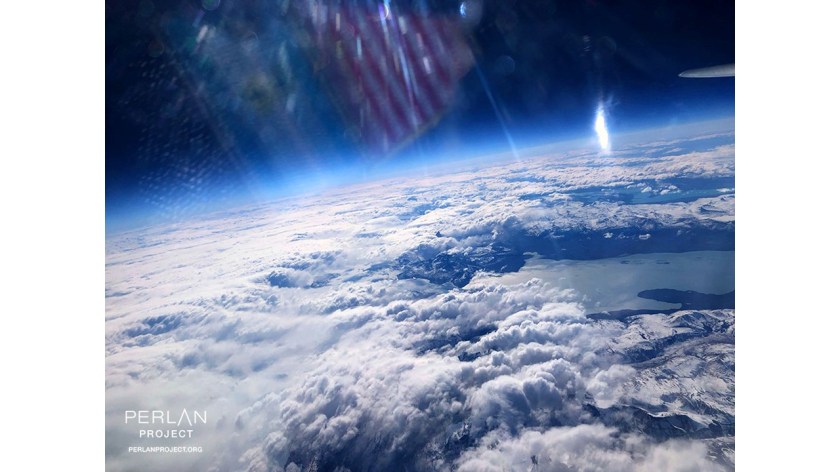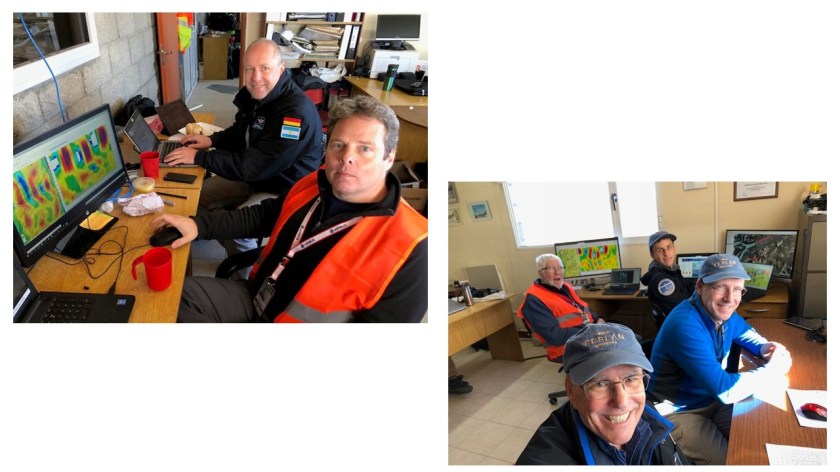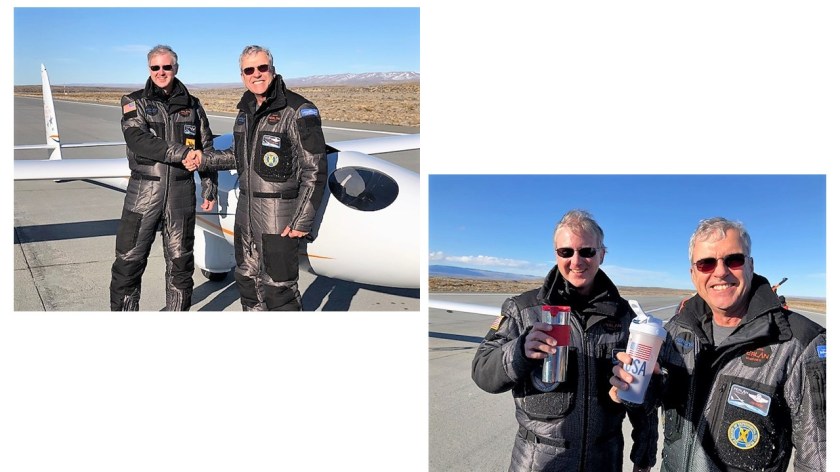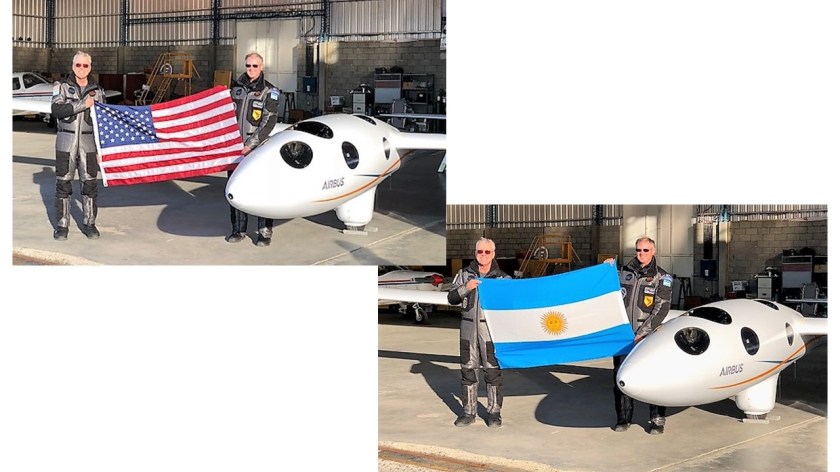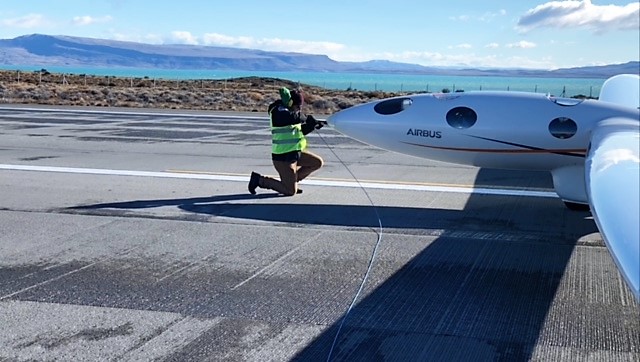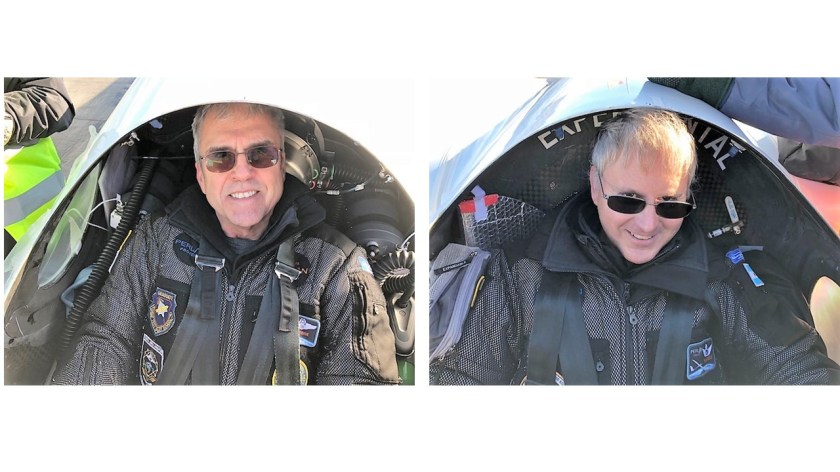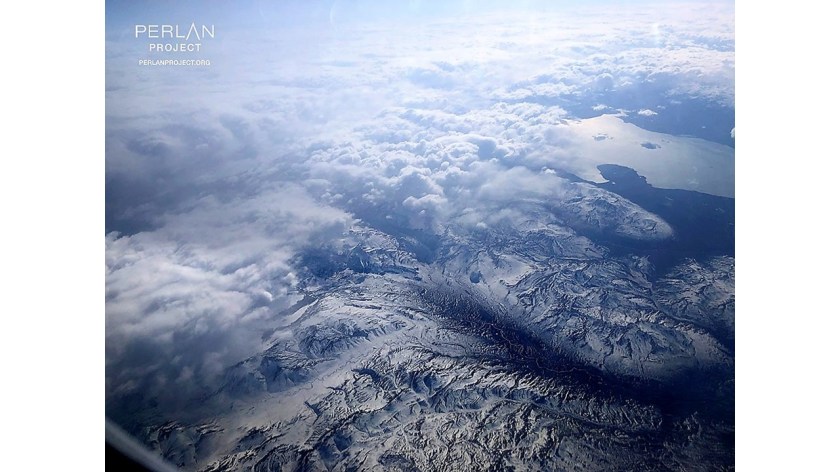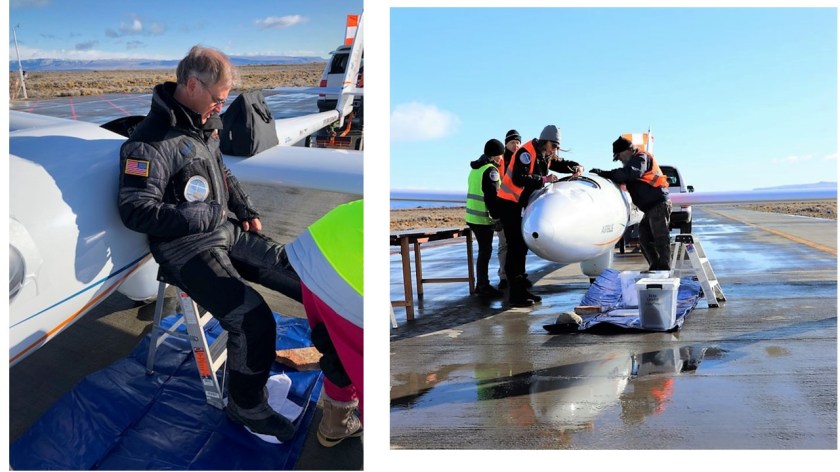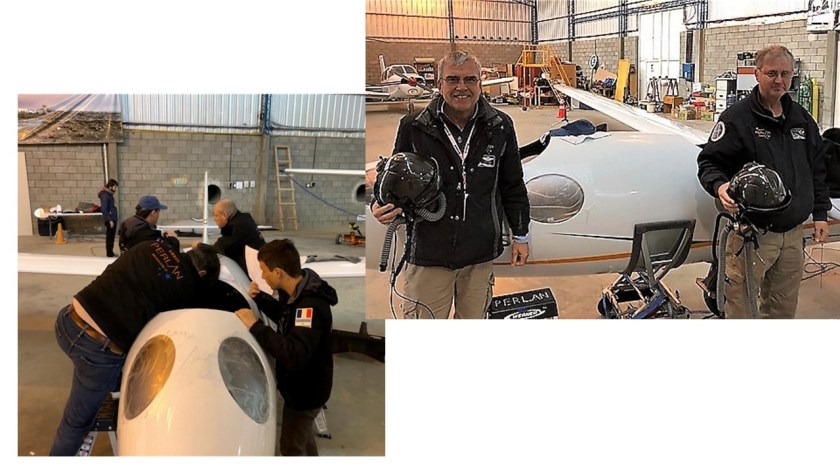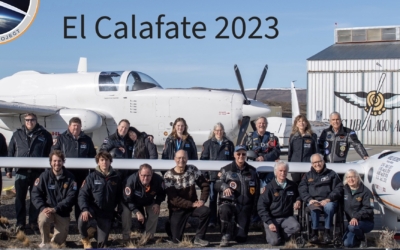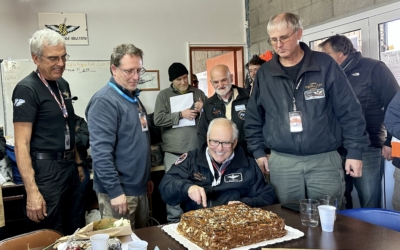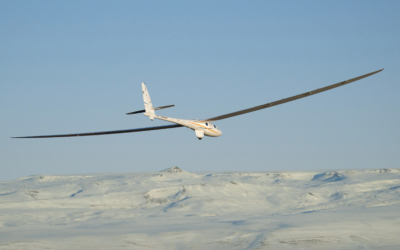On September 2, 2018 Airbus Perlan Mission II claimed its third world record in a fabulous week of high altitude Patagonia soaring. The team of 20 dedicated people, and the Perlan 2 glider were ready to fly again when the weather supported our goals of Exploration, Innovation, and Inspiration.
The pre-flight process inspected all life support systems and a few tweaks were made. Luciano Bruzzese from Buenos Aires had come to visit representing FAVA for Argentina record approval.
The night before and in the early morning hours, El Calafate had hard rain, snow flurries, and even small hail. Initially Tim had wanted to launch early based on forecasts, so we arrived in the dark for final preparations. The morning clouds were low, but forecast by Walt (and Dan remotely) to dry up as the surface winds increased. We delayed an hour, then another hour. We watched the wet rooster tails as commercial airlines took off. Miguel assessed the runway conditions personally. Finally Jim set a 11:30 launch time to fit into commercial flight scheduling. The forecasts had changed to best conditions in the afternoon, rather than the morning. The low () tropospheric mountain wave to 20,000 feet looked extremely weak. The lift through the tropopause looked weak as well, but at least it was forecast to exist. The tropopause is what Perlan Project calls mid-level.
But Airbus Perlan Mission II has always been focused on the high stratospheric wave. We are more interested in the atmosphere 40,000 feet and above. That’s where the Perlan 2 is best optimized to explore and collect untainted science data. Yes the records are fun and they grab headlines, but for us they document the altitudes safely achieved without an engine when the stratospheric wave is working. Records are not the primary goal of Perlan Project, more like the icing on the cake.
We pushed the Perlan 2 out of the hangar onto a semi-wet ramp with brisk winds. Nothing was allowed to get wet, even pilots’ inner booties. Their walking soles were dried so there was no chance of ice forming near their feet. Then Jim and Tim put the last layer of insulation on. The pilots and all gear were loaded into the cockpits. The pressurization test was flawless. (Thanks again Greg for those hatches!) The protection film was removed from the uber sensitive polycarbonate windows and it was time to go to the runway.
The launch behind Arne in the Egrett into a brisk, cold wind was again flawless. My launch video shows without a doubt that the takeoff roll was 200 feet when Perlan 2 lifted off. As they climbed together, Arne and Perlan reported possible sink areas but no lift areas. We are trying to collect data to help forecasters with their weather models. The tow rope somewhat impacts the wind speed data for the Perlan while on tow. But as they towed through the tropopause there was no lift for Perlan to work. They arrived at the bottom of the high wave zone and finally reported decent lift. Arne said it was best he had seen this season.
The Perlan 2 is optimized for high altitudes. But the higher you go and the faster the true airspeeds, the stronger lift Perlan needs just to stay level. A forecast of 5 knots (500 foot per minute) means we cannot climb at these altitudes, we need more. And until we actually fly in the forecast zone we don’t know how to reality check the forecast. Is it offset 5 kilometers up/down wind? Does the lift band actually start higher/lower than forecast? Do the downwind wave harmonics exist? Stronger/weaker lift? All of these questions have had conflicting adjustments from one high flight to the next. More accurate weather models for South America can improve our understanding of weather globally.
Today’s tow was just over an hour. But it took that long to connect with the bottom of the stratospheric wave around 44,000 feet. Once off tow Perlan 2 climbed into decent wave, but not spectacular. It took an hour to get above the old record. Tim made a great video of that 3 minutes from inside Perlan 2. At this point they were just above 20,000 meters or 66,000 feet. That is more than twice as high as Mount Everest! There is a YouTube link below. Jim and Tim got several photos looking down at Mount Fitzroy peaking through the clouds from this altitude.
Once in new altitude territory, Jim performed several test points to verify that the airframe was behaving as expected according to the flutter models. This is shown by the flat line on the barogram where they are not climbing. Lars Bensch in CapComm analyzed the data real time. After these runs met approval it was time to seriously climb.
If you watch on our Virtual Cockpit we try to give near real time commentary on Twitter so you have the inside knowledge of what’s really happening with Perlan 2. Over 12,000 folks watched on a Labor Day holiday Sunday. The Perlan 2 passed 70,000 feet and stopped for more flutter excitation runs. Then they soared through the U-2 record altitude above 73,000 feet. The actual high point was just over 76,000 feet pressure altitude. The FAI uses GPS altitude which was just over 74,000 feet. These numbers will be adjusted after the instrument calibration is performed in the next two months post flight as the rules require.
Unfortunately the front cockpit go-pro and the front displaying tail camera did not work on this flight. The Garmin VIRB 360 did work and there is a YouTube link to the highest footage at end of the blog. This was extremely scenic as the highest point was over the turquoise waters of Lago Argentino with Lago Viedma under the left wing. The high point is one minute into that video.
The landing at El Calafate was again with a mostly flat tire, looking into the sun, with a brisk wind. We got some excellent photos of two happy pilots. The hot chocolate and hot tea were well received by the pilots. Our NASCAR quality line crew aired up the tire before pulling the Perlan 2 back to the hangar. The champagne was ready and the ecstatic team posed (mostly out of the wind) inside the hangar with the frozen Perlan 2. Check out Stewart’s beard as our personal wind sock in the team photo. Stewart and I got the flight logs downloaded and Luciano observed me Observing.
What a fabulous week of stratospheric wave soaring it was. Three world records claimed in this time with very few squawks to work on before the next high altitude attempt. Jim said : We believe that this is the highest sustained flight by a winged, manned, subsonic aircraft…Thanks to Aero Club Lago Argentina, ANAC, EANA, LADE, PSA, El Calafate Aeropuerto, El Calafate Torre, Comodoro Control, Egrett Team, and the Perlan Team for the outstanding support.
Perlan Soars High! Jackie
YouTube of 2:45 minutes of tail camera above 76,000 feet (pressure) altitude https://youtu.be/_hk7JcKMrkk
OLC Flight Trace https://www.onlinecontest.org/olc-3.0/gliding/flightinfo.html?dsId=6888067
YouTube of 3 minutes inside Perlan 2 as they break the previous record https://youtu.be/pRhKlVCgujE

